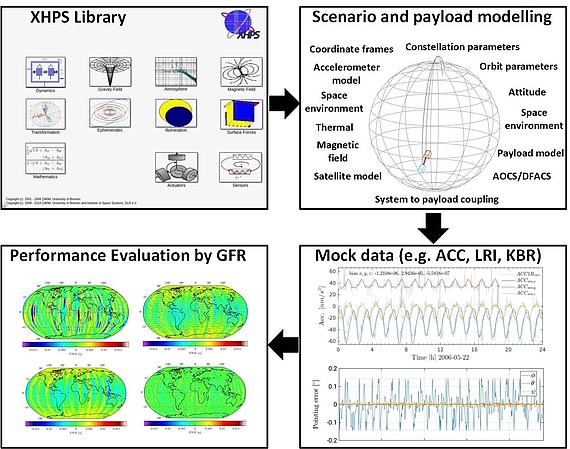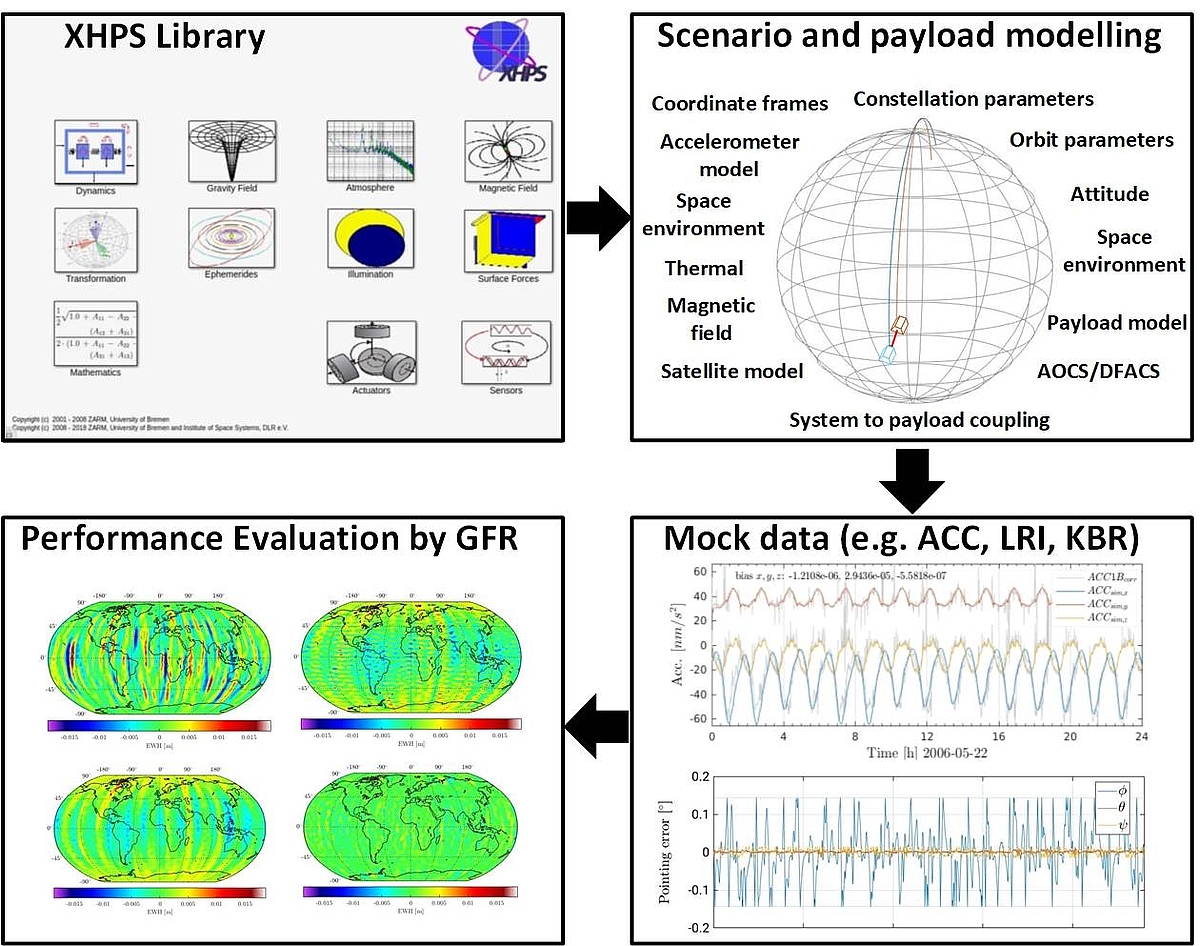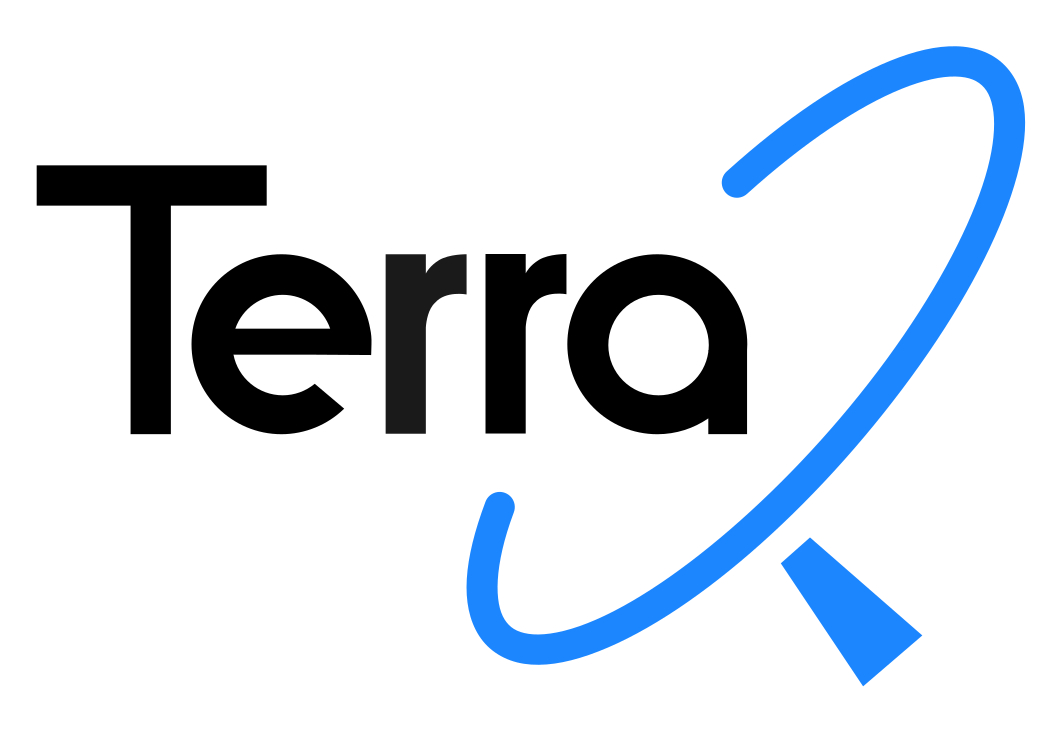B02 aims at developing a multi-purpose space mission simulator as the central modelling testbed for new satellite gravimetry concepts researched in this CRC. The simulator will generate realistic mock data both on system and sensor level by employing full-scale satellite models, incorporating environmental interactions as well as interactions between satellite system and sensors with highest fidelity. We are going to focus on a generic simulation ansatz for all types of prospective future gravity missions ranging from GRACE-like concepts to formation flight and swarm scenarios. With GRACE-FO as a reference mission in orbit we employ an enhanced system and perturbation modelling approach to generate a full set of mock data including (i) science data, (ii) house keeping, (iii) Attitude and Orbit Control System (AOCS), (iv) satellite states, and (v) navigation solution support and compare to actual measurements. While a comparison between modelled and measured data serves as an evaluation of the involved methods, we will also resolve perturbation sources by analysis of the characteristics of the residuals and consequently mitigate their influence on science data evaluation. The analyses conducted in B02 will include research on supporting schemes for sensor calibration based on enhanced non-gravitational perturbation modelling.


 ©
ZARM/DLR
©
ZARM/DLR
In order to evaluate individual perturbation models on another level we aim at directly comparing model predictions with the respective parameters (e.g. the estimated drag coefficient) used in GRACE-FO orbit determination. By understanding and resolving discrepancies we can thus also contribute to an improvement of orbit determination accuracy. A similar approach will be followed to check consistency and potential improvements in Gravity Field Recovery (GFR). By utilising our simulator we will analyse principal design drivers (e.g. geometrical aspects, orbital parameters, attitude logic etc.) for increased mission performance as well as detailed mission scenarios. In employing advanced gravity field recovery schemes in conjunction with the mission simulation we effectively realise a closed-loop performance analysis for satellite gravimetry. The uncovering of discrepancies in numerical models and evaluation schemes will benefit both the quality of the modelling as well as the further development of enhanced methods for gravity field recovery for new mission concepts. We will furthermore focus on studies of preliminary mission design for new sensors as proposed by other projects of the CRC and support sensor development by providing specific data such as drag free control based attitude history. B02 thus acts as the essential simulation testbed for all space-related geodesy concepts developed in TerraQ. It brings together expertise from sensor and hardware experts, mission designers and gravity field recovery specialists. Based on the inputs of the other projects in this CRC concentrating on new mission and sensing concepts, data evaluation schemes as well as specifics of hardware, B02 realises a complete end-to-end simulation of each concept allowing for a global performance evaluation and optimisation strategies. By this B02 takes an important step towards the definition of future candidates for satellite gravimetry missions.
Objectives of B02 - Multi-Purpose Space Mission Simulator
- the preparation of the central simulation testbed for the analysis of (a) in-orbit sensor performance and (b) merit of multiple sensor concepts within TerraQ,
- the generation of mission scenarios and mock data sets based on improved system and environmental modelling,
- the gravity field recovery from the designed scenarios and generated mock data,
- the investigation of possible improvements of existing gravimetric measurement concepts and identification of new concepts including new sensors and multi-satellite constellations,
- the development of a simulation environment for detailed GRACE-FO disturbance identification, mitigation and sensor calibration support,
- the implementation of all new sensor concepts developed in TerraQ and all additional models as requested by the community to enable scenario performance evaluation.












